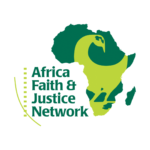The child soldiers of the Democratic Republic of the Congo (DRC) are not the only children who are taken from their families and abused by the government and rebel groups. The DRC also houses a large number of street children, many of whom run away from their families because of abuses or starvation.
Unlike in the United States and other nations, abusing a child is not illegal in the D.R. Congo. There is no escape from the violence that goes on in a child’s life either by relatives, teachers in schools, or anyone who finds any reason to blame the child. The laws in place for these children are few and many date back to colonial times. One law “forbids vagrancy or begging by minors,” causing the police under a government order to round-up these children periodically and, according to Human Rights Watch, hold them “in overcrowded and unsanitary police lock-ups. Once in detention, children are often kept together with adult criminals and receive little or no food or medical attention. They are rarely charged with crimes, but instead are released back to the streets after several days or weeks, in part because the state has no alternatives to prison or the street for vagrant children.” It is not unusual to see police using children to perform tasks such as digging and cleaning latrines. Once the tasks are performed the children are released back onto the street. The police may also force the children to pay bail in order to be released. Many of the children do not have money to pay for the bail and are locked up for days or even weeks.
Children in the Congo may also be kicked out of their homes due to suspicions that they are able to use witchcraft. As reported in an article about the issue on Christian Science Monitor, “‘Witchcraft has been there for a while, but it was never used against children in the past. Families that have old people used to accuse that old person of being a witch, when they were no longer productive,’ says Javier Aguilar, a child protection officer for the United Nations Children’s Fund (UNICEF) in Kinshasa. He says that 70 percent of the 20,000 street children in Kinshasa have been accused of being witches.” These children may experience severe beatings and undergo a “deliverance ceremony” performed by the church. In their families they are given little or no food and may be secluded from the other children. Many of the children feel like they have no other option than to live on the street.
HIV/AIDS also leaves a large number of children out on the street. Once their parents die and the children have no one to take care of them, they end up on the streets. Stigma regarding HIV/AIDS also pays a huge factor, as many children whose parents are known to have died from the disease are discriminated against. The majority of the Congolese population also does not know a lot about the disease itself, which also fuels stigma and discrimination against those affected.
The United Nations issued a press release on April 14, 2009 announcing plans to send a human rights envoy to the region and to make sure that children’s rights are protected. The envoy plans to look at the situation first-hand and “will focus on the plight of child soldiers, sexual violence and other crimes against children, and the special needs of internally displaced and refugee children.” This list does not include the situation that faces children of rape by the United Nations Peacekeeping Mission in the Congo (MONUC), the Congolese army, and foreign fighters (Rwandan and Ugandan) operating in eastern Congo. It will also meet with the Congolese government, NGOs, militia groups, and children to assess the situation and see what steps need to be taken. Their goal is to separate children from the armed forces in various regions in the Congo.
One of Africa Faith and Justice Network’s (AFJN) main focus campaigns is to promote peace in the Congo. This includes raising awareness of the problems that face these children every day.
For more detailed information on the problem of street children in the Congo, please visit the Human Rights Watch report cited in this article.
Written by Katie Mattern
